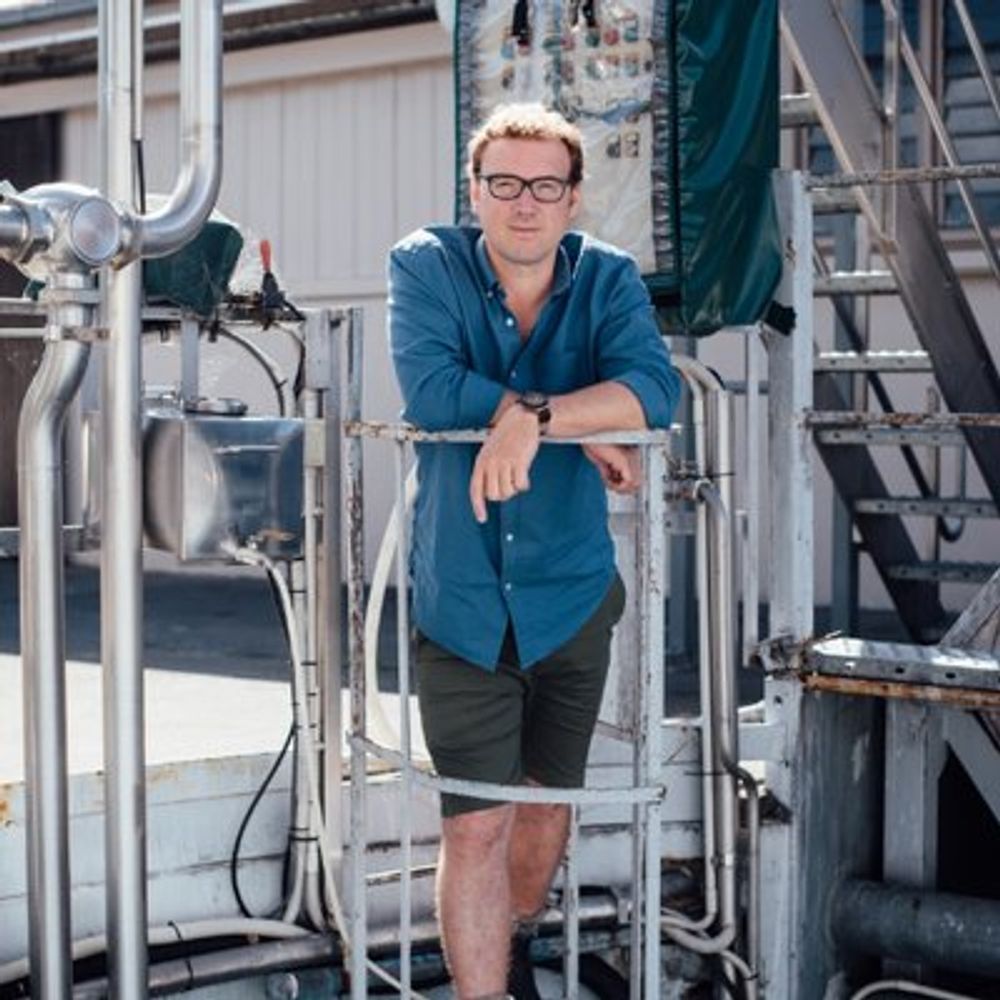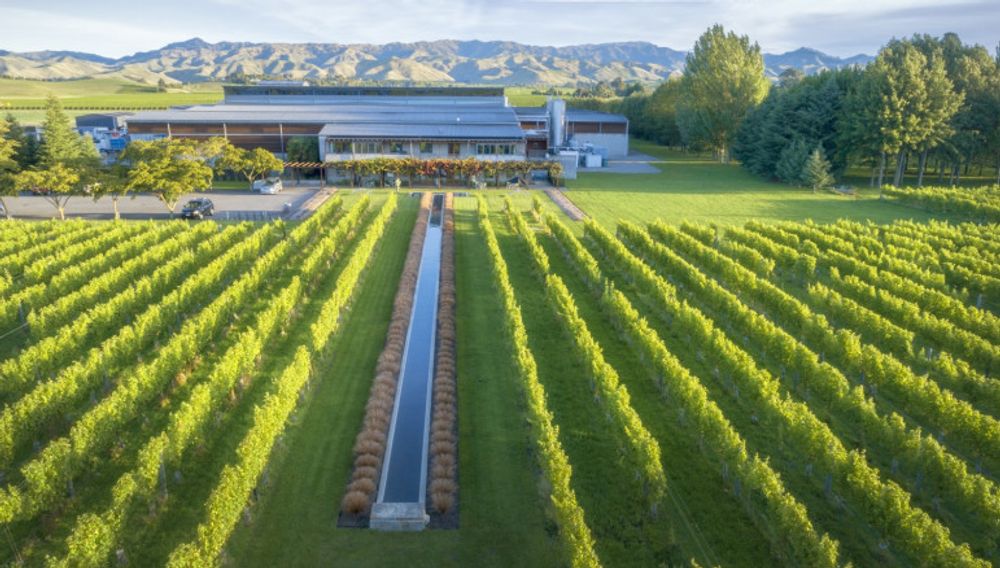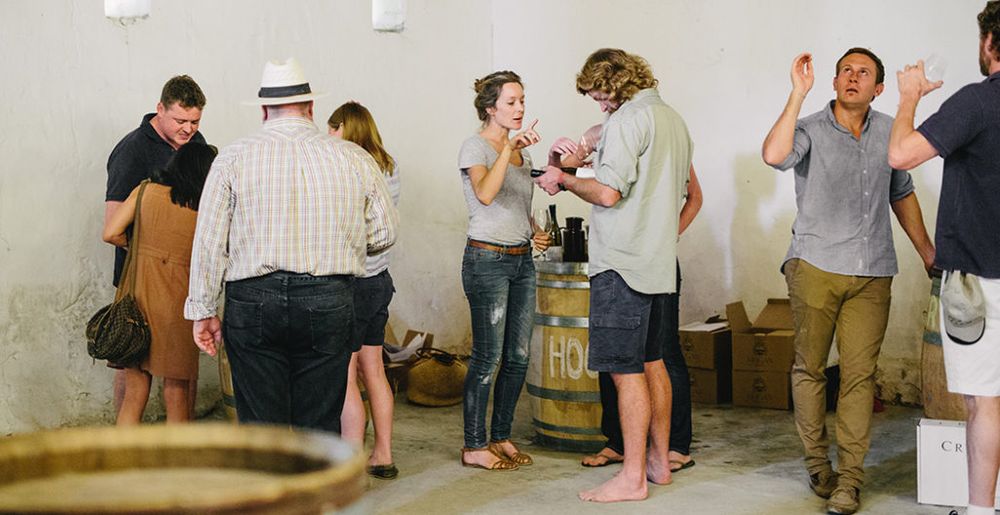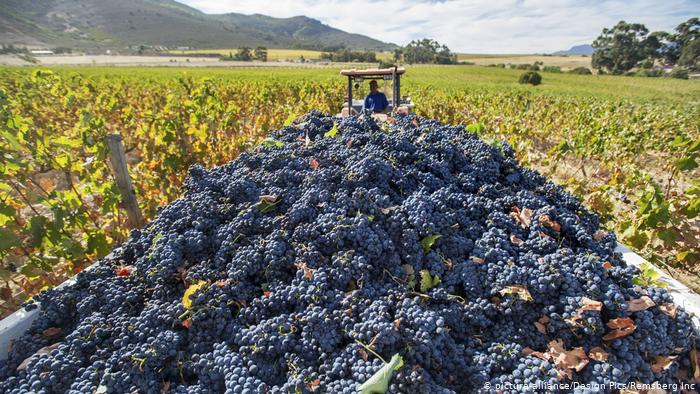If you want to experiment and make the wines of your viticultural dreams then you need to know where and how to get your hands on high volume, low priced grapes that are readily available in the bulk wine market, says Oliver Styles.

Oliver Styles says some of the most exiting wines being made are coming from high volume bulk fruit
There are certain known knowns: if you want people to leave the dancefloor and go home, you play Radiohead; if you want to get anywhere on social media, you affect a permanent state of passive/agressive confrontational pomposity, presumably while wondering what the world has come to; if you want me to leave you alone, you talk about the secondary wine market. “Oh, a case of Pomerol has gone down two points on the Right Bank index? You want to invest in Super Seconds?” My eyes sparkle like those of a four day-old fish.
But there is another secondary market in wine. It’s not reselling that case of Petrus you picked up in the early 2000s “for a steal”, it’s at the opposite end of the spectrum. And it’s possibly the most interesting and most overlooked – if not a remarkably important – market in wine altogether.
Because what happens at the cheap, volume end of the industry – the place where we talk about wine lakes and grape gluts and overproduction and slim margins and bulk deals and so on – isn’t all bad. What it engenders, or what it provides, is space for things to start, for experimentation, for other things to develop.
Because at the cheap end, no one really minds too much. In 2009, I made my first wine: 150 litres of white from 100 year-old bush vine Verdejo. It was the kind of thing that would sell in a heartbeat right now. The vines I got to take from were a bit of an anomaly in a predominantly red wine region – Tierra del Vino de Zamora – and the local co-operative wasn’t exactly taking the grapes and selling the resulting wine wine at a premium. So I got a sweet deal with my mate Luis Santamaria’s dad. He wasn’t too fussed who took the Verdejo.
Bulk experiments

All those vines, all that wine…Villa Maria is just one of countless major wine brands that also works in the bulk wine market too
But it’s not just about me. In 2015, Villa Maria made a skin-contact Sauvignon Blanc under their R&D label. It was different – and delicious – but that kind of experimentation could have only come from Marlborough Sauvignon Blanc, right? There’s enough to go around and, in the event of disaster, the cost of failure is the lowest. You don’t run experiments on your rarest or priciest grapes. They weren’t doing zero sulfur natural winemaking on their Pinot Noir, or experimenting with not topping the Chardonnay for nine months.
It’s because of this high volume end of the market that we hit potentially the most interesting thing about the secondary market at the lower end: high volume grapes tend to be more readily available, if not cheaper. Thus new brands and winemakers are able to come in at this end of the market. How many nominally bulk, ‘cheap’ regions (and we’re not just talking New World here – Europe too) now sport a crop of chic, hirsuite, low-intervention winemakers? You’re not going to see many qvevri in Pomerol, right?
Sure, evolution in wine isn’t entirely driven from the bottom – more and more high-end producers are embracing organics or biodynamics, like Château Pontet-Canet. It’s also shame large-scale wineries in the New World aren’t having more conversations about dry farming, even if noises are being made in Europe about introducing irrigation. But people want new and interesting and different (how many wine publications of the last 10 years have the word “new” in the title?) and that’s generally coming from below.
This, I think, is the primary source of anger against the natural wine movement. It’s not the faults or the dogma or the perceived righteousness of the adherents, it’s the development d’en bas; it’s an impotence of the establishment. Having an appellation, a brand, a market share, a name – it’s a blessing and a curse.
Villa Maria could never turn its entire production to extended skin-contact Sauvignon Blanc. There’s a wonderful moment in TV comedy The Thick of It where the night editor of a broadsheet says ” Just tell me what the f***ing news is and I’ll put it on the front page. It’s not like we’re The Independent, we can’t just stick a headline saying ‘Cruelty’ and then stick a picture of a dolphin or a whale underneath it. I mean, that’s just f***ing cheating…” That’s the sentiment against natural wine.
Brings new opportunities

The Zoo Biscuits is a group of South Africa’s most exciting alternative winemakers many of whom who also rely on buying and selling wines on the bulk and high volume market both for cash flow and to help access fruit to experiment with
But to return to my point: while high volume, overproduction and low-priced varieties is seen as being far from the ideal of the wine industry, it’s corollary (availability, experimentation, and, I guess, expendability) has allowed a vast number of new producers and different styles to carve out space and market share. Unless, like Wine Folly, you’ve made a business model out of it, it can be dangerous to generalise. But some of the most interesting and new brands are being made from standard grapes, available to pick up at affordable prices. If only more Central Valley Merlot was made in amphorae…
But there is one other vital element that runs through this and that’s the human; the element of goodwill, of fraternity. In terms of buying grapes, those already holding the fruit don’t really have to sell it to chancers and nobodies. Luis’ dad, for instance, was never obliged or compelled by market forces to sell me his grapes – he made a loss letting me into his vineyard (although he was later able to boast that his vineyard produced the best homemade white wine in the appellation – as solemnly judged by a panel).
But I reckon there’s something in most people that registers the nobility of the endeavour, the excitement of letting someone have a go. You see it in wineries all the time: trial batches often get more attention from the cellar crew than the batches destined for retail. You can’t help it, it bubbles up.
- Oliver Styles is winemaker at Halcyon Wines in New Zealand.
































